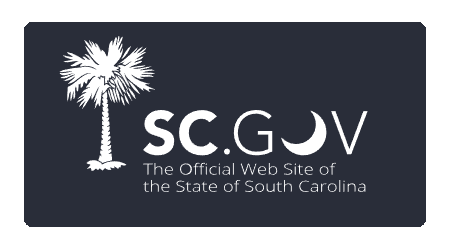Legislative Menu
-
Chamber Video
- Video Schedule
- Video Archives
Legislative Menu
South Carolina Law > Code of Laws > Title 27
South Carolina Code of Laws
Unannotated
Title 27 - Property and Conveyances
CHAPTER 8
Conservation Easement Act
SECTION 27-8-10.Short title.
This chapter may be cited as the South Carolina Conservation Easement Act of 1991.
HISTORY: 1991 Act No. 92, Section 1.
SECTION 27-8-20.Definitions.
As used in this chapter, unless the context otherwise requires:
(1) "Conservation easement" means a nonpossessory interest of a holder in real property imposing limitations or affirmative obligations, the purposes of which include one or more of the following:
(a) retaining or protecting natural, scenic, or open-space aspects of real property;
(b) ensuring the availability of real property for agricultural, forest, recreational, educational, or open-space use;
(c) protecting natural resources;
(d) maintaining or enhancing air or water quality;
(e) preserving the historical, architectural, archaeological, or cultural aspects of real property.
(2) "Holder" means:
(a) a governmental body empowered to hold an interest in real property under the laws of this State or the United States; or
(b) a charitable, not-for-profit or educational corporation, association, or trust the purposes or powers of which include one or more of the purposes listed in subsection (1).
(3) "Real property" includes surface waters.
(4) "Third-party right of enforcement" means a right provided by the grantor of the conservation easement to enforce selected terms of the conservation easement which is granted to a governmental body, a charitable, not-for-profit, or educational corporation, association, or trust, which though not the holder of the easement, is eligible to be the holder of such easement.
HISTORY: 1991 Act No. 92, Section 1.
SECTION 27-8-30.Conservation easements generally; creation, duration and effect; conveyances.
(A) Except as otherwise provided in this chapter, a conservation easement may be created, conveyed, recorded, assigned, released, modified, terminated, or otherwise altered or affected in the same manner as other easements and must be recorded in the same manner as other easements.
(B) No right or duty in favor of or against a holder and no right in favor of a person having a third-party right of enforcement arises under a conservation easement before its acceptance by the holder and a recordation of the acceptance in the office of the register of deeds for each county where the land burdened by the conservation easement lies.
(C) Except as provided in Section 27-8-40(B), a conservation easement is unlimited in duration unless the instrument creating it provides otherwise.
(D) An interest in real property in existence at the time a conservation easement is created is not impaired by the easement unless the owner of the interest is a party to the conservation easement or consents to it.
(E)(1) A conservation easement may be conveyed to a holder without consideration by any local governmental body, including a county, municipality, and other political subdivision, if the conveyance is authorized by the elected members of the governmental body that owns the property to be burdened by the easement.
(2) For the purposes of this subsection an elected member of a governmental body includes a member serving on the governmental body ex officio, provided that the member has been elected to another office. A governmental body consisting of appointed members may make a conveyance only with the approval of the elected members of the governmental body that appointed the members.
(3) A governmental body proposing to convey an easement shall submit a proposal to the Advisory Board of the Heritage Trust Program, and the advisory board shall conduct a public hearing on the proposal within sixty days of receiving the proposal. The public hearing may be conducted by the advisory board by one or more members of the board or one or more members of the staff of the Heritage Trust Program as designated by the chairperson of the board. The persons conducting the hearing promptly shall submit to each member of the advisory board a written summary of the testimony, public comment, and other information presented at the hearing. Within thirty days after the hearing the advisory board shall approve or disapprove the proposal based on the testimony, public comment, and other information. The approval or disapproval by the advisory board may be indicated at a meeting of the board or by written ballot of the individual members. If the proposal is approved, the governmental body shall conduct a public hearing not less than thirty nor more than sixty days after the approval, at which the easement must be explained and public comment received.
(4) For a governmental body to convey an easement under this subsection, at least two-thirds of the elected members of the governmental body shall approve the conveyance. No member of a governmental body that conveys an easement in accordance with this subsection is personally liable for the actions of the governmental body.
(5) Items (2), (3), and (4) of this subsection do not apply to an easement burdening land that is adjacent to a river or river segment whose designation as a scenic river under the State Scenic Rivers Program has been ratified by the General Assembly under Section 49-29-90.
HISTORY: 1991 Act No. 92, Section 1; 1993 Act No. 32, Section 1.
Code Commissioner's Note
1997 Act No. 34, Section 1, directed the Code Commissioner to change all references to "Register of Mesne Conveyances" to "Register of Deeds" wherever appearing in the 1976 Code of Laws.
SECTION 27-8-35.Easements excepted from public hearing requirement.
The provisions of Section 27-8-30(E)(3) of the 1976 Code do not apply to an easement conveyed by a county or municipality if the county or municipality is compensated for the easement from the Conservation Bank Trust Fund under Chapter 59 of Title 48 of the 1976 Code, or if the donation of an easement by a municipality or county is an integral part of a larger proposal for which a grant or loan is made from the Conservation Bank Trust Fund under Chapter 59 of Title 48 of the 1976 Code.
HISTORY: 2002 Act No. 200, Section 6.
SECTION 27-8-40.Who may bring action affecting easement.
(A) An action affecting a conservation easement may be brought by:
(1) an owner of an interest in the real property burdened by the easement;
(2) a holder of the easement;
(3) a person having a third-party right of enforcement; or
(4) a person otherwise authorized by law.
(B) This chapter does not affect the power of a court to modify or terminate a conservation easement in accordance with principles of law and equity.
HISTORY: 1991 Act No. 92, Section 1.
SECTION 27-8-50.Validity of easements.
A conservation easement is valid even though one or more of the following exist:
(1) It is not appurtenant to or does not run with an interest in real property.
(2) It may be or has been assigned to another holder.
(3) It is not of a character recognized traditionally at common law.
(4) It imposes a negative burden.
(5) It imposes affirmative obligations upon the owner of an interest in the burdened property or upon the holder.
(6) The benefit does not touch or concern real property.
(7) There is no privity of estate or of contract.
(8) It does not run to the successors and assigns of the holder.
HISTORY: 1991 Act No. 92, Section 1.
SECTION 27-8-60.Applicability of Conservation Easement Act to, and its effect on, property interests.
(A) This chapter applies to interests that meet the definition of conservation easement under Section 27-8-20(1) whether designated as a conservation easement or a covenant, an equitable servitude, a restriction, an easement, or otherwise.
(B) This chapter does not invalidate an interest designated as a conservation or preservation easement or a covenant, an equitable servitude, a restriction, an easement, or otherwise, that is enforceable under other laws of this State.
HISTORY: 1991 Act No. 92, Section 1.
SECTION 27-8-70.Effect of easement on assessment of property for ad valorem tax purposes.
For ad valorem tax purposes real property that is burdened by a conservation easement must be assessed and taxed on a basis that reflects the existence of the easement.
HISTORY: 1991 Act No. 92, Section 1.
SECTION 27-8-80.Condemnation of conservation easements.
A person or entity empowered to condemn may condemn a conservation easement for other public purposes pursuant to applicable provisions of the 1976 Code or federal law. Holders of the conservation easement must be parties to the proceedings along with the owner of the land.
HISTORY: 1991 Act No. 92, Section 1.
SECTION 27-8-90.Biennial review of plight of land loss.
The Board of the Conservation Bank shall perform a biennial review of the plight of land loss by small landowners and holders of heirs' property. The results of this review, upon completion, must be published in an official board report and submitted to the South Carolina General Assembly for its use.
HISTORY: 2002 Act No. 200, Section 8.
SECTION 27-8-100.Use of trust fund monies for beach conservation.
Notwithstanding any other provision of law, the Department of Parks, Recreation and Tourism as an eligible trust fund recipient is authorized but not required to use monies it receives from the Conservation Bank Trust Fund to provide for beach conservation at the State Parks System.
HISTORY: 2002 Act No. 200, Section 10.
SECTION 27-8-110.Use of trust funds to acquire land adjoining state parks.
Notwithstanding any other provision of law, the Department of Parks, Recreation and Tourism as an eligible trust fund recipient is authorized but not required to use monies it receives from the Conservation Bank Trust Fund to provide as a priority for the acquisition of lands adjoining the State Parks System to be used as part of the State Parks System.
HISTORY: 2002 Act No. 200, Section 11.
SECTION 27-8-120.Repealed.
HISTORY: Former Section, titled Prospective repeal; termination of South Carolina Conservation Bank, had the following history: 2002 Act No. 200, Section 7; 2012 Act No. 162, Section 1, eff May 14, 2012. Repealed by 2018 Act No. 224, Section 6.A, eff July 1, 2018.
 Loading
Loading



